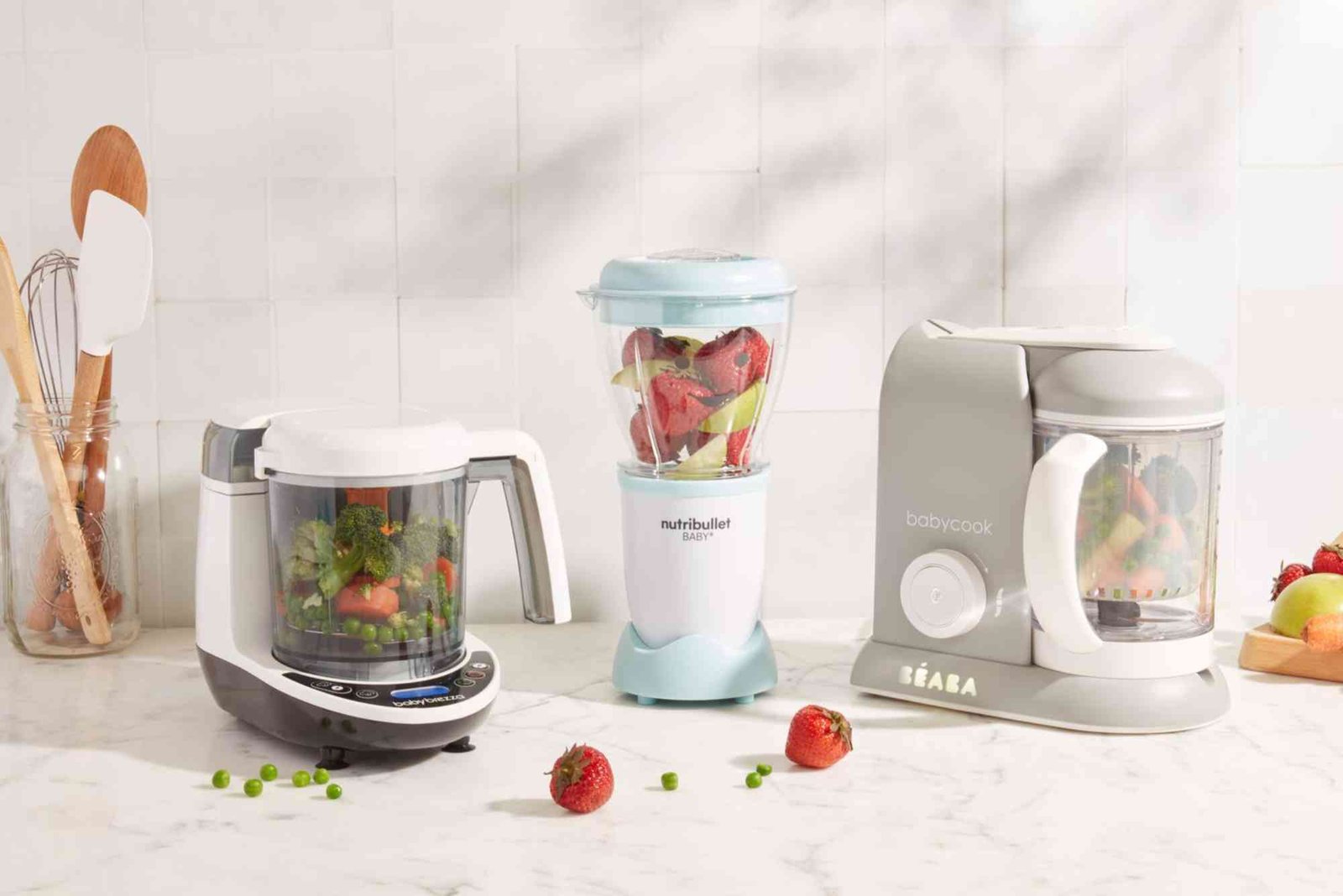The Ultimate Guide to Baby Food Makers: Preparing Healthy Meals for Your Little One
As a parent, ensuring your baby gets healthy and nutritious food is one of your top priorities. A baby food maker can be a game-changer, making it easier to prepare fresh, homemade meals without the hassle. This guide will help you understand the benefits of a baby food maker, how to choose the right one, and why it’s an essential tool for your baby’s meal prep.
What is a Baby Food Maker?
A baby food maker is a small kitchen appliance designed specifically for preparing baby food. These devices typically combine several functions, such as steaming, blending, and pureeing, to help parents quickly prepare healthy, homemade meals for their babies.
Why You Need a Baby Food Maker
Healthier Options
Homemade baby food is often healthier than store-bought jars or pouches. You can control the ingredients, avoiding preservatives and added sugars that might be present in commercial products.
Nutrient Preservation
Many baby food makers come with steaming functions that preserve more nutrients than traditional boiling or microwaving. Steaming ensures the food retains its vitamins and minerals.
Convenience
A baby food maker saves you time by allowing you to prepare large batches of food in one go. You can freeze portions and have them ready whenever needed.
Customization
Baby food makers let you create customized meals according to your baby’s taste preferences or dietary needs. Whether it’s a smooth puree or a chunkier texture, you can make the food as you like.
Key Features to Look for in a Baby Food Maker
Ease of Cleaning
Look for a food maker with detachable parts that are easy to clean. Many models are dishwasher-safe, which adds to the convenience.
Multiple Functions
A versatile baby food maker can steam, blend, puree, and even chop ingredients. Some models even allow you to defrost and reheat food.
Capacity
Choose a baby food maker with an appropriate capacity for your needs. If you have a larger family, you may want one with a bigger bowl to prepare more food at once.
Safety Features
Check for features like an automatic shut-off or overheating protection. These safety features ensure the appliance is safe to use around your baby.
Best Baby Food Makers to Consider
Beaba Babycook Pro 2X
This high-end model offers steaming, blending, and reheating features. It has a large capacity, making it great for batch cooking.
Nourish Baby Food Maker
With its compact design and user-friendly controls, the Nourish Baby Food Maker makes preparing meals easy. It includes a steaming function to preserve nutrients.
Cuisinart BFM-1000 Baby Food Maker
A great mid-range option, this Cuisinart model offers multiple features, including a powerful motor, steaming, and blending capabilities. It’s ideal for busy parents.
Philips Avent Combined Steamer and Blender
This versatile food maker can steam and blend in the same container, reducing the need for extra pots or dishes. It’s easy to use and quick to clean.
How to Use a Baby Food Maker
Wash and Prepare Ingredients
Start by washing fruits, vegetables, or meats thoroughly. Peel or chop them as needed.
Steam the Ingredients
Add the ingredients to the steamer section of the baby food maker. Most models allow you to steam food until it’s soft and tender.
Blend to the Desired Consistency
Once steamed, transfer the food to the blender or food processor section. Depending on your baby’s age, you can blend it into a smooth puree or a chunkier texture.
Serve or Store
Once the food is ready, serve it immediately or store it in airtight containers for later use. Many parents freeze portions in ice cube trays for convenient meal prep.
Tips for Storing Baby Food
- Freezing: Freeze portions in ice cube trays and store them in ziplock bags. This makes it easy to defrost individual servings.
- Use within 2-3 days: Refrigerated baby food should be consumed within a few days to maintain freshness and prevent spoilage.
- Labeling: Always label containers with the date and contents to keep track of what you have in the fridge or freezer.
Benefits of Making Homemade Baby Food
Freshness
Homemade baby food is always fresh, ensuring your baby gets the best quality ingredients with no additives or preservatives.
Cost-Effective
Making baby food at home is more cost-effective than buying pre-packaged baby food. You can buy ingredients in bulk and make several servings at once.
Better Control
Making your own baby food allows you to control the consistency, flavors, and textures, ensuring that your baby is getting the right nutrients for their growth and development.
FAQs About Baby Food Makers
1. Can a Baby Food Maker be used for all food types?
Yes, most baby food makers can handle a variety of foods, including fruits, vegetables, meats, and grains. Ensure the ingredients are cut into small pieces before steaming or blending.
2. How long does it take to prepare baby food in a food maker?
Preparation time varies depending on the food maker and the ingredients, but most models take about 15-20 minutes to steam and blend.
3. Can I store baby food in a food maker?
No, baby food makers are meant for preparing food, not storing it. Once your food is made, transfer it to a container and refrigerate or freeze it.
4. Are baby food makers safe to use?
Yes, baby food makers are generally safe as long as you follow the manufacturer’s instructions. Many models include safety features like automatic shut-off for added peace of mind.
With the right baby food maker, preparing nutritious, homemade meals for your little one becomes easier and more efficient. Whether you want to make simple purees or more advanced meals, investing in a good food maker can help support your baby’s healthy growth and development.



